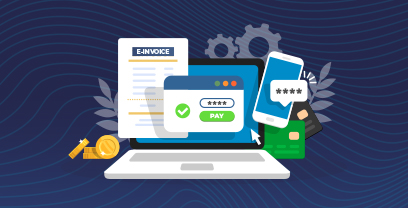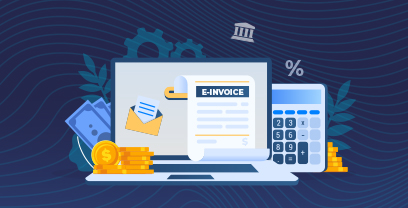Procurement management plays a pivotal role in making sure organizational needs are met. It covers purchase requisitions, purchases orders, invoice approval, vendor management, and contract management to ensure purchases go smoothly from beginning to end and beyond.
While the procurement process is complex, best practices, like creating a dream team, engaging with suppliers, standardizing processes, and selecting tools that help optimize things like order quantities and contract terms can minimize effort and capture cost savings. Solutions like Ivalua’s Procure-to-Pay can help manage all the aforementioned procurement activities and more.
Introduction
The modernization of the Invoice-to-Pay process with e-invoicing in procurement has marked a significant shift in how organizations manage their purchasing and supply chain activities. By leveraging digital tools and solutions, procurement teams have unlocked substantial cost savings and efficiencies.
According to research by Ardent Partners, the average AP function now receives 52% of its invoices and makes 60% of its payments electronically – and researchers expect these numbers to continue to increase.
It’s also worth noting that, according to Ardent’s report, 71% of AP leaders believe that using smarter systems is the best way to drive efficiency – which is a good way to reduce costs, especially when processing invoices manually costs more than $10 and takes more than 10 days to process.
In this post, we’ll explore Invoice-to-Payment processing and learn how e-invoicing solutions such as Ivalua’s e-invoicing software can transform accounts payable processes and deliver value by reducing transaction costs, improving transparency and traceability, as well as invoice management.
What is Invoice-to-Pay?
The Invoice-to-Pay process, also known as the procure-to-pay process, is a fundamental financial procedure in a business that covers the entire sequence of events from receiving an invoice from a supplier to making the invoice payment. It plays a crucial role in the accounts payable operations of a company.
Traditionally, Invoice-to-Payment processing has been viewed as an integral part of the entire procurement process. At each step of this journey, evidence is gathered that ensures that when the Invoice arrives, the AP function can validate invoice payment. Therefore, by using the supplier’s desire for invoice payment, and good quality data, top performing organizations can achieve high levels of straight-through-processing and automation.
Rather than the traditional silos of payment processing, budget allocation and invoice payments, ensuring AP is not an isolated process but part of the whole procurement journey is critical.
What Are The Benefits Of An Efficient Invoice-to-Pay Process?
An efficient invoice-to-pay process can have a significant positive impact on a company’s financial health and operational efficiency. It provides stakeholder visibility and enables more efficient cashflow management, alleviating issues around poor PO match rates and improving staff morale.
A well-managed Invoice-to-Pay process also helps to prevent late payment fees and avoid damaging the company’s credit rating, all while minimizing administrative burden and reducing the likelihood of errors, fraud or duplicate payments.
What Are The Key Steps In The Invoice-to-Pay Process?
The Invoice-to-Pay process involves several key steps:
- Invoice Receipt: Payment processing begins with the receipt of an invoice from a supplier or vendor. The invoice typically includes details such as the amount due, payment terms, and a description of the goods or services provided.
- Invoice Processing: Upon receipt, the invoice undergoes verification and approval. This may involve matching the invoice with purchase orders and delivery receipts, validating the billing details and ensuring that the goods or services were received as agreed.
- Account Posting: Once verified and approved, the invoice details are posted to the company’s accounting system. This step involves recording the financial transaction in the appropriate accounts.
- Payment Authorization: After posting, the invoice is queued for payment, subject to the company’s payment policies and cash flow considerations. The payment schedule is typically influenced by the payment terms negotiated with the supplier.
- Payment Execution: The final step is the actual invoice payment, which can be made via various methods, such as electronic transfers, checks or credit cards.

Top Challenges in the Invoice-to-Pay Process
Organizations often encounter numerous challenges and inefficiencies in their Invoice-to-Pay process that can have a significant impact on business performance, not the least of which is a reliance on manual tasks like data entry. The task of keying in data – even hybrid invoice data capture (IDC) – along with matching invoices to purchase orders and receipts, and routing them for approval often involves substantial manual labor, leading to errors, inefficiencies and potential delays.
Another significant challenge is the risk of losing or misplacing invoices, especially in paper-based systems. Not only can a lost invoice delay payment, it can have an adverse affect on your relationship with the supplier. Missing data can also complicate audits.
At the same time, accounting departments are experiencing increased invoice exceptions, and they’re flooded with supplier inquiries. When there’s no standardized workflow, different departments follow rogue procedures, which can cause a lot of confusion and increase the likelihood of errors. Resolving discrepancies between invoices, purchase orders and goods received can be time-consuming and further delay the payment process. Late payments can incur penalties and harm the company’s credit rating – not to mention supplier relationships.
Many organizations struggle with a lack of real-time visibility into the status of invoices and payments, which makes financial reporting difficult and increases the risk of fraud and compliance issues. Maintaining consistent records and payment documentation is tedious and error-prone when using paper-based systems, as well.
All of this results in poor staff morale and retention, plus poor cashflow controls that impact the value of the company.
To mitigate these challenges, many companies are adopting e-invoicing solutions such as Ivalua’s e-Invoicing software. These technologies not only streamline the invoice-to-pay process but also enhance accuracy and efficiency, and provide better control over financial transactions and cash optimization.
Enhance Your Invoice-To-Pay Process with Automation
A recent Hackett report identified that top-performing organisations, with high levels of AP automation, could save up to 54% on invoice processing costs and only had a third of the internal employees focused on AP. Automating and digitizing payment processing helps your business:
- Increase efficiency and save time: Automation drastically reduces the time needed for processing invoices. Tasks like data entry, matching invoices with purchase orders, and routing them for approvals are automated, freeing up staff to focus on more strategic tasks. This efficiency can lead to quicker payment processing cycles.
- Reduce costs: While there’s an initial investment in setting up an automated system, the long-term savings are significant. Automation reduces labor costs associated with manual processing and helps avoid late payment fees through timely payments. Additionally, it can potentially secure early payment discounts from suppliers.
- Eliminate errors and improved accuracy: Manual invoice processing is prone to human error, but automation minimizes these risks. Automated systems are designed to accurately capture data, detect discrepancies, and reduce the chances of errors like duplicate payments. Plus, the ability to integrate the invoicing process with your ERP system ensures that data from e-invoices flows directly into the company’s financial systems, leading to more accurate financial records.
- Enhance visibility and control over financial transactions: Digital invoice processing systems offer real-time tracking of the invoice status, allowing for better cash flow management, since it’s easier to predict outgoing expenses and manage working capital with a high level of accuracy.
- Simplify compliance and audits: Automated systems ensure that all transactions are consistently recorded and stored, which makes it easier to adhere to regulatory requirements. This consistent record-keeping is also beneficial during audits, since all the necessary documentation is organized and easily accessible.
- Streamline approval workflows and payment processes: Automation enables the design of customized approval workflows. You can automatically route invoices to the appropriate people for approval, eliminating delays.
- Strengthen supplier relationships: Timely and accurate payments enabled by automated invoice processing helps you to build trust and improve your organization’s relationships with suppliers. Ultimately, this can result in better negotiation terms and service.
- Scale with business growth: As your business grows, your financial operations need to scale accordingly. Automated invoice processing systems can handle an increased volume of invoices without a proportional increase in resources or costs.
- Gain business insights: Automated systems collect data you can analyze to mine valuable insights into spending patterns, supplier performance and potential cost-saving opportunities.
Thanks to these benefits, automated, e-invoicing systems have become a key component in the digital transformation of finance departments.
Maxim Healthcare Services Overcomes P2P Adoption Barriers with Ivalua
Maxim Healthcare Services is one organization that significantly improved its procurement process by implementing Ivalua’s Procure-to-Pay solution. The company came to Ivalua in hopes of replacing a legacy system that had been in place for 7 years. The system had low supplier adoption – only 15 suppliers used it – and required having the invoice processed manually. In fact, 80% of the company’s invoices were still being processed manually.
By partnering with Ivalua and OPTIS Consulting, Maxim Healthcare was able to go live with a new, more efficient P2P system in just 8 weeks. This rapid implementation allowed for over 1,000 users to be onboarded onto the new system, demonstrating the speed and efficiency of Ivalua’s solution in transforming procurement processes.
Read the case study on the successful deployment of Ivalua’s P2P solution which enabled Maxim Healthcare to overcome technology adoption barriers and streamline their procurement operations. At the same time, supplier relationships benefitted from greater transparency and faster processing.
Capture Savings And Enhance Supplier Relationships With Ivalua
Ivalua’s e-invoicing solution stands out in the procurement sector for its comprehensive suite of features that streamline and optimize sourcing activities, offering robust tools for RFX management, auctions and supplier contracts. Ivalua’s integrated approach is a key benefit, seamlessly connecting e-sourcing with broader procurement functions such as spend analysis and contract management.
Additionally, Ivalua’s advanced analytics provide deep insights into sourcing activities, supporting informed decision-making. The scalability and global support of the software make it suitable for diverse business sizes and types, ensuring adaptability and growth. Overall, Ivalua’s e-sourcing software is a powerful, flexible, and insightful tool, making it an excellent choice for organizations looking to enhance their procurement efficiency and effectiveness.
Read Ardent Partners’ Report which explains how Ivalua helps to improve slow, costly payment processes with an effective framework, one that helps recognize and restructure key areas for growth.
An Integrated Approach to Procurement
E-invoicing is a critical component in modern financial operations, offering a digitized, efficient approach to invoice management. It plays a vital role in streamlining the invoice-to-pay process, significantly reducing manual labor and minimizing errors. By incorporating e-invoicing alongside e-sourcing capabilities, businesses can achieve a comprehensive, integrated approach to procurement, increase efficiency, reduce costs and strengthen supplier relationships.
Watch this short demo to learn how Ivalua’s e-invoicing software fits into its overarching Invoice-to-Pay solution to simplify complicated invoice payment processes, reduce payment delays and improve the supplier experience.



